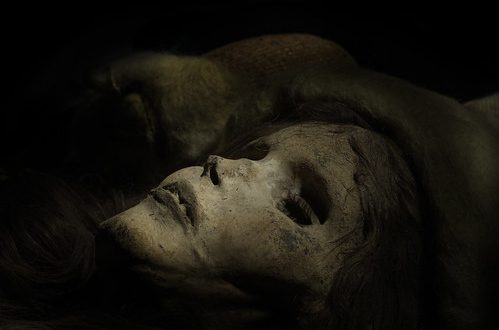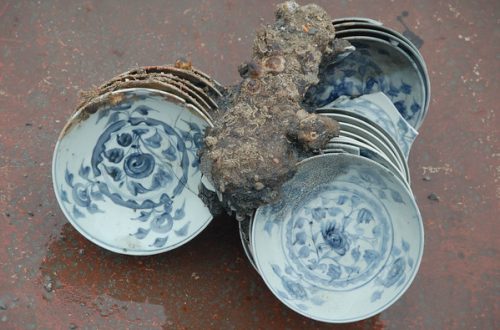 According to archaeologist Liu Qingzhu, trying to name the most important discoveries in China is like facing another, albeit seemingly more simple, question — which one tastes better: dumplings or rice?
According to archaeologist Liu Qingzhu, trying to name the most important discoveries in China is like facing another, albeit seemingly more simple, question — which one tastes better: dumplings or rice?
“Southerners from China will say rice is better, but northerners will say dumplings,” Liu said. “Then Westerners will say they like French food and that bread is good.”
Listing the most important archaeological discoveries faces similar difficulties, he added. One finding may have had more relevance for one region of China, while not affecting the other. China’s history is also long and not so easy to cover. Still, Liu said there are certain archaeological finds that have not only helped our understanding of China, but also the world.
Below, we try to list the top 10 most important archaeological discoveries made in the country. Not all may agree, so please comment below if you think any other discovery deserves mention.
1: Yangshao Village
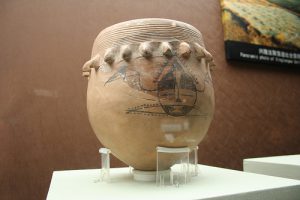 Located in Henan province, the village was the first Neolithic settlement uncovered in the country and marked the birth of Chinese archaeology. The excavation, carried out in 1921, was led by Swedish scholar Johan Gunnar Andersson, who would help pioneer the archaeology field in China.
Located in Henan province, the village was the first Neolithic settlement uncovered in the country and marked the birth of Chinese archaeology. The excavation, carried out in 1921, was led by Swedish scholar Johan Gunnar Andersson, who would help pioneer the archaeology field in China.
The discovery revealed an agricultural society now known as the Yangshao Culture, which lasted from 5000 to 3,000 BC. Drawing the world’s interest were the painted pots found at the site. Archaeologists would later find better preserved settlements belonging to the culture in China’s central plain. But the excavation of the village would help reshape the thinking about China’s past, giving native scholars a new way to study the country’s history, rather than rely on ancient texts and their own speculation.
2: Peking Man at Zhoukoudian
The find marked one of the earliest discoveries of human fossils belonging to primitive man. The first excavations, made during 1923 to 1927, uncovered the remains of a Homo erectus that — according to new estimates — lived around 750,000 years ago. Subsequent digs found more complete skeletal bones as well as ancient tools.
Not only did the discovery give proof to theory of evolution, but the work was also pioneering since Chinese archaeology was just emerging at the time. Unfortunately, the original fossils discovered at the site were lost while being shipped to America during World War II. Casts and detailed descriptions of the bones, however, still exist. But even now archaeologists continue to perform excavations at Zhoukoudian site hoping to learn more.
3: The Yin Ruins
In 1928, archaeologists would locate a capital to the Shang Dynasty, one of China’s earliest ruling states (1600 to 1046 BC). The first excavations revealed parts of an entire city, giving scholars an in-depth look at a dynasty they were only beginning to understand.
Dynasty, one of China’s earliest ruling states (1600 to 1046 BC). The first excavations revealed parts of an entire city, giving scholars an in-depth look at a dynasty they were only beginning to understand.
The capital, known as Yin, was pinpointed through the use of unique animal bones that contained inscriptions made during the Shang dynasty. Chinese scholar Li Chi, regarded as the father of Chinese archaeology, would lead the first excavations. From 1928 to 1937, his team would uncover a palace, tombs and numerous artifacts. Many more Chinese archaeologists would continue Li’s work, making the Yin ruins another major stepping stone for the field.
4: Terracotta Warriors and the Mausoleum of the First Emperor
Probably the most famous discovery made in China, the Terracotta Warriors and the First Emperor’s Mausoleum have become world-renowned since their finding in 1974.
Farmers near Xi’an were the first to accidentally discover the site for the Terracotta Army. Since then archaeologists have worked to excavate the different funerary pits built under the rule of China’s first emperor Qin Shi Huang (246 to 221 BC). The army itself comprises of more than 8,000 statue soldiers, each modeled to be unique and life-like. Archaeologists, however, are still trying to excavate the emperor’s mausoleum, which is said to be heavily booby-trapped.
5: Erlitou
Debate still surrounds this famous archaeology site. But some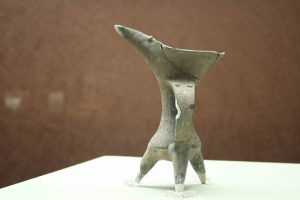 archaeologists believe Erlitou to be where China’s earliest ruling state was based.
archaeologists believe Erlitou to be where China’s earliest ruling state was based.
The Xia Dynasty, which existed from 2070 to 1600 BC, is documented in Chinese historical texts, but these accounts were written long after its demise. Archaeological excavations have tried to prove the dynasty’s existence. This led to the Erlitou site discovery in 1959, revealing a city that was inhabited from around 1900 to 1500 BC.
Some archaeologists have tried to link the site to the Xia Dynasty, while other archaeologists remain unconvinced. Still, the discovery holds great importance about understanding the origins of Chinese civilization.
6: The Mogao Grottoes at Dunhuang
This ancient Buddhist site has been said to be a like a museum for Chinese art and culture. The Mogao Grottoes, a system of caves that are made up of 492 cells, served as a major cultural center along the Silk Road route in China’s Gansu province. The caves themselves contain artwork and relics that form a 1000-year timeline from the 4th century AD to the 14th century.
The most important find came when in the early 20th century, a Taoist monk named Wang Yuanlu found huge stacks of manuscripts inside one of the caves. These manuscripts contained many rare texts, such as a copy of the Diamond Sutra, the oldest surviving printed book known. Wang, however, later sold many of these manuscripts to foreign scholars. The remaining manuscripts are kept in institutions across the world, where they are safely stored.
7: Banpo
Discovered in 1953, Banpo is another famous archaeological site in China associated with Yangshao culture. From 1954 to 1957, archaeologists excavated the site to find the remains of an ancient settlement near present day Xi’an. The settlement was likely to have been inhabited from 4800 to 4300 BC.
Archaeologists have found dozens of houses and graves on the site, which covered an area close to 15 acres. These houses were generally made out of wood and mud. Banpo also marked the first excavation on this large of scale had been embarked upon by native Chinese archaeologists.
8: Liangzhu
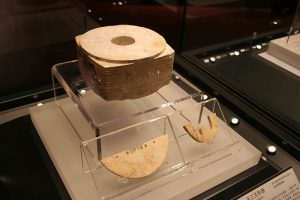 Scholars once generally believed that Chinese civilization originated along the country’s Yellow River. But over these last several decades, archaeologists have found ancient settlements in areas they once thought were backwaters to Chinese culture.
Scholars once generally believed that Chinese civilization originated along the country’s Yellow River. But over these last several decades, archaeologists have found ancient settlements in areas they once thought were backwaters to Chinese culture.
One such area has been along the country’s Yangtze River, which is located further down south. Since 1936, archaeologists have found more than 100 sites belonging to what is now known as the Liangzhu culture.
The culture lasted from about 3200 to 2200 BC and is often distinguished by the prevalence of their jade artifacts. Evidence shows that the society practiced sacrifice, was highly stratified and paid a great importance to religion.
9: Sanxingdui
In 1986, archaeologists found the sacrificial pits to a mysterious culture at a site called Sanxingdui. The pits contained hundreds of gold, bronze and jade objects dating back to the 12th century BC. Attracting the most attention were the bronze objects, which showed a unique art style.
The find surprised many since such an advanced culture was not expected to be found in this area of the country; there is no mention of this culture in any historical texts. The discovery, however, offered further evidence that Chinese culture was also developing in other regions separate from the country’s Yellow River.
10: The Mummies of Xinjiang
Over the last decades, archaeologists have continually found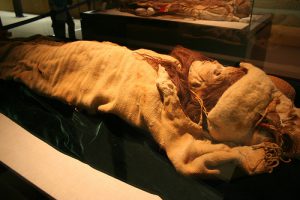 well-preserved mummies in China’s Xinjiang autonomous region, which is located on the country’s western border.
well-preserved mummies in China’s Xinjiang autonomous region, which is located on the country’s western border.
Due to region’s dry climate, many of these buried bodies have survived over the centuries and millennia, with hair and skin still in tact. The earliest of these mummies have been dated to 1800 BC. But what makes them striking is that many of them bear European-like facial features.
These mummies have helped show how the region has served as an area of cultural exchange of both East and West for millenia. But the discovery has also fueled sensitive debates on how outsiders influenced the country.



